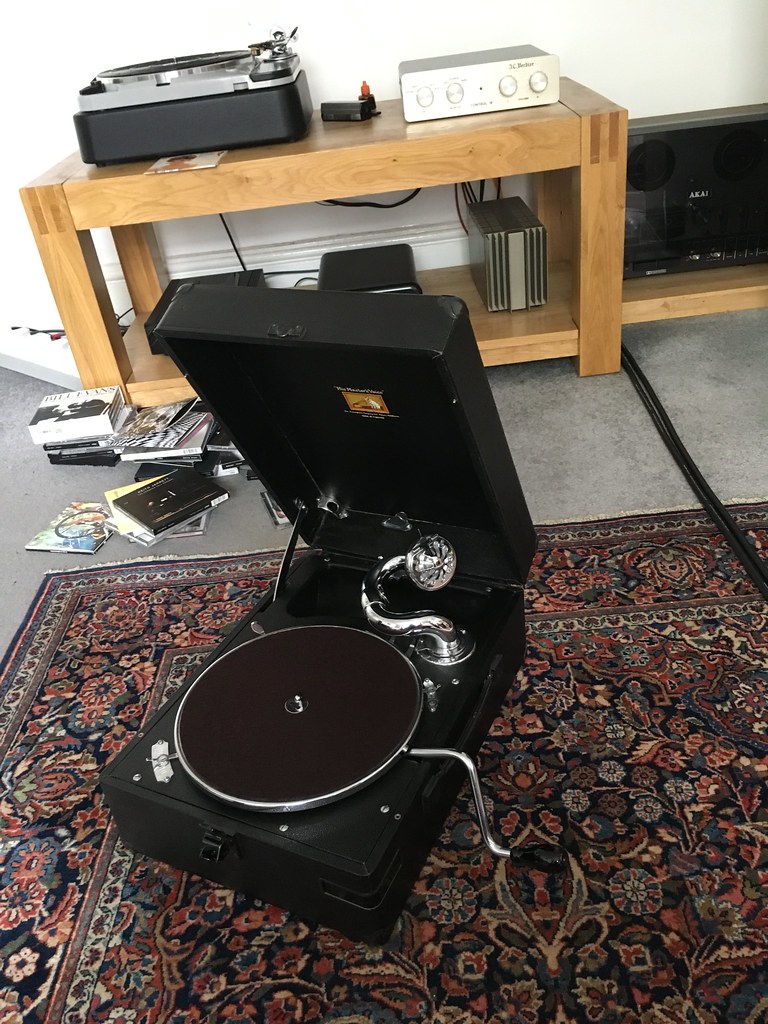Dear Tony,
Mine was an early example with non-chromed winding handle. Unfortunately no photo exists and it met a sad end. I had the last side of Schnabel's estimable 1932 recording of Beethoven's First Piano Concerto in C on the turntable and I left my room [at farm college] when some person decided to go in and have a play. Unfortunately it had locked the auto-stop at the end of the side so the motor could not turn, but obviously it was almost completely un-wound at the end of the side.
So the pillock wound it up with no turning action and kept going till the spring broke. Back in 1984, I suppose that nobody thought of actual repairs to a spring on an out of date gramophone, and reluctantly I put it in the bin. I had played all 1200 78s I had borrowed over the preceding three years, and that little machine led me to some performances recorded in an older age that I still treasure like the Artur Schnabel Beethoven Concertos and the Adolf Busch Bach Brandenburg Concerto set among others. I actually cried over its demise. But I returned the 78s to their owner, and if it had not happened I guess that I would probably have been given them and still have them today. As it is I would guess that they have long since been thrown out.
Fortunately the best of those veteran recordings have emerged on CDs over the last thirty years, and as a result of this experience, even today about a third of my remaining CDs are transfers from 78 masters by EMI from those particular recordings I grew to love through that little gramophone. Can you imagine me winding the little machine up on my bed in the dark playing six or ten sides before sleep! Perfect attention to the music can be achieved in the dark ...
Only one thing has given me as much pleasure in terms of home music replay since, and that is my Troughline - also frequently listened to in the pitchy blackness of the night. There are certain musical replay devices that though obviously not perfect do the essentials so well that you can forgive the fact that it is not real live music making.
I still have the winding handle and a box that once contained medium tone needles.
Before I borrowed that large collection of 78s I had access to a smaller selection of my own scrounged records! Including a rather unusual record issued in 1917 on Regal of the Russian [Imperial] Anthem, the Begian, the French, and the UK anthems played by the King's Military Band. Many Regal Gracie Fields records in including Sally, but also several complete Elgar [composer conductor] recordings including the two symphonies, Violin Concerto, Wand Of Youth Suites, Severn Suite, and some sides from an incomplete set of the Cello Concerto with Beatrice Harrison. It so happens that I have never come across a performance the Cello Concerto that comes close to the poignancy of Harrison's recording.
Seemingly understated, it digs deeper into the retrospective sadness of the music than any recordings since. An amazing achievement recorded back in 1927.
Sorry for the ramble.
Best wishes from George


